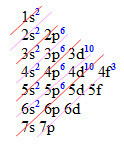From the 15th century, under the leadership of Portuguese and Spanish, Europeans began a process of intense globalization, the so-called Maritime Expansion. This fact was also known as the Great Navigations and had as its main objectives: obtaining wealth (commercial activities) both through exploration of land (minerals and vegetables) and by the submission of other human beings to slave labor (indigenous and African), by the intention of territorial expansion, for the spread of Christianity (Catholicism) to other civilizations and also for the desire for adventure and the attempt to overcome the dangers of the sea (real and imaginary).
Therefore, we will recommend our analysis in the desire for adventure and overcoming the dangers of the sea. Did the Europeans really believe at the time of the Great Navigations that planet Earth was shaped like a square? And that in the seas there were tenebrous monsters?
Whenever we read texts about the European Maritime Expansion, it is common to find references to the dangers of the seas, the inexperience and inaccuracy of navigators, these texts give us the impression that Europeans did not have any technical and technological apparatus for the time, and it seems to us that when they would launch themselves into the sea, they would be walking in darkness, without vision and without destiny. Who has never heard or read about the arrival of the Portuguese in the territory of what is now Brazil, that they wanted to go to the Indies and got lost and ended up arriving in America! So, did you get here by chance?
First, we must think about how these ideas (square land, tenebrous sea, monsters, torrid zones) emerged in the thinking and mentality of Europeans in the 15th century. Since the Middle Ages the Catholic Church held enormous political and spiritual (religious) powers. Therefore, the Church disseminated theories about natural, human and spiritual things to readily exercise its power. Generally, those who contradicted the Theocentric theories of the Church suffered severe persecution. Furthermore, Catholicism exercised the prohibition and censorship of certain books, especially those of philosophers of classical antiquity (Plato, Aristotle, Socrates).
This situation only began to change with the advent of urban and commercial renaissance. Allowing other possibilities for reading the world, natural, human and spiritual things. Thus, the Portuguese infant D. Henrique started in Sagres (South of Portugal) a place of studies that brought together navigators, cartographers, cosmographers and other people curious about sea travel.
This place of studies became known as the School of Sagres, in this school they developed new studies on navigation techniques, perfected the compass, the astrolabe (geo-orientation tools), produced constant maps of routes through the oceans and created new types of vessels, for example, the caravels, lighter and powered by lateen sails of a triangular shape, which facilitated maneuvers on the high seas and made it possible to travel longer distances.
The differences are clear between the chance of navigating and the precision in the navigations, if we analyze maps made before the School of Sagres, we notice in these the presence of monsters in the ocean illustrations as obstacles for navigators, another important aspect in these maps was the presence of angels drawn in the sky, representing the protection of navigators, as if these angels were protecting the vessels.
In addition to overcoming the real dangers (storms, damage to ships, illnesses, hunger and thirst), navigators, due to the medieval mentality, still they had to overcome their imaginary fears (sea monsters, the torrid zone, the flat dimension of the planet, the further they sailed the closer they would be to the abyss). We believe that the presence of imaginary fears existed, but technical and technological innovations (School of Sagres) provided another "look" to navigations, allowing for Maritime Expansion European.
The dissemination of the idea of the arrival of the American continent by the Portuguese is nothing but a possible praising the Portuguese achievements, who would have faced the tenebrous sea and heroically found the “New World". About the deconstruction of chance (they got lost and arrived in America), we have reports that prove that other navigators arrived before Pedro Álvares Cabral (April 1500), they were: the Italian Américo Vespucci (1499), the Spaniard Vicente Pinzón (1499), and Diego de Lepe (January 1500), but they did not take possession of the Earth.
Therefore, if other navigators passed through the coast of present-day Brazil before Cabral's fleet, they would possibly know the route to arrive. In the crew reports, there is no reference to storms and turbulence at sea; for even if they were lost at sea, the compass and the astrolabe (technological of the time) would guide the navigators geographically, and they would certainly know their position.
Leandro Carvalho
Master in History
Source: Brazil School - https://brasilescola.uol.com.br/historiag/expansao-maritima-europeia.htm


